My brother Robbie sent me some pictures yesterday, saying
I thought you’d like to see some of the corn we grew this year. The crop was terrible because of the extremely dry weather, but the kernels are still pretty.
I think they are gorgeous! They look like candy.
Robbie continues,
It’s interesting to see how the different colors interact. You have to assume that every kernel on a cob is a cross between something else and the one that grew the plant that the ear is on. I think red and purple are dominant. But there is at least one ear that’s entirely white. I don’t know how that happened.
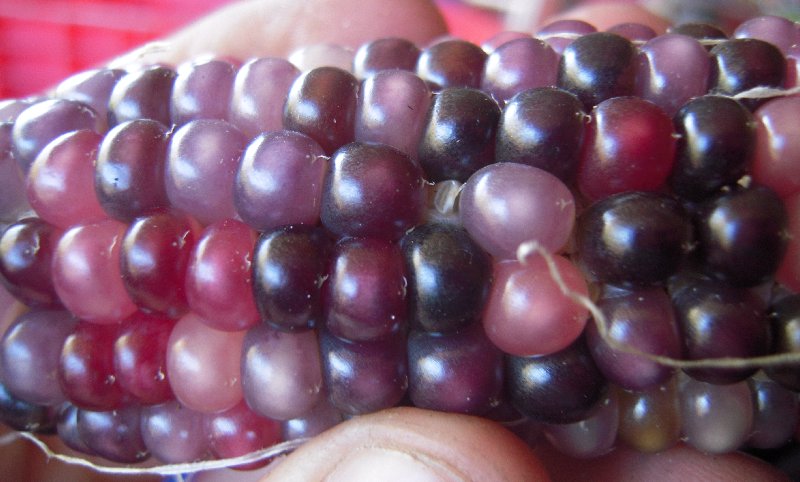
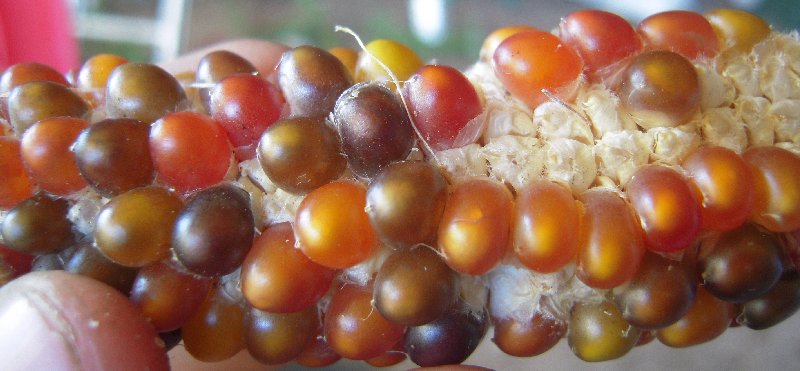
I love this one.
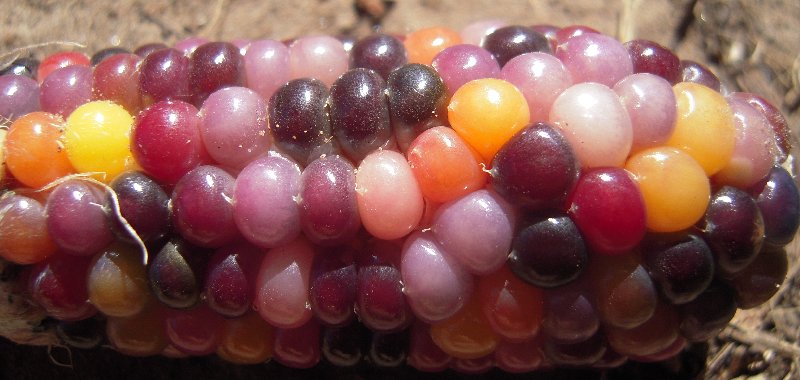
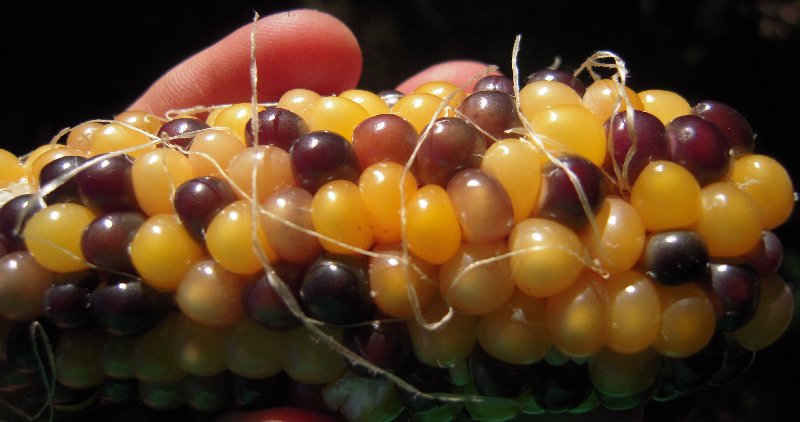
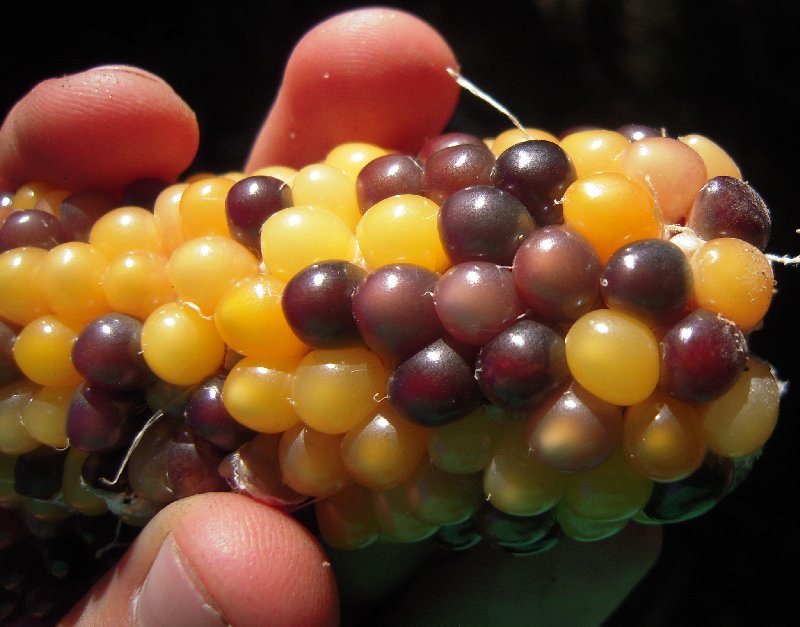
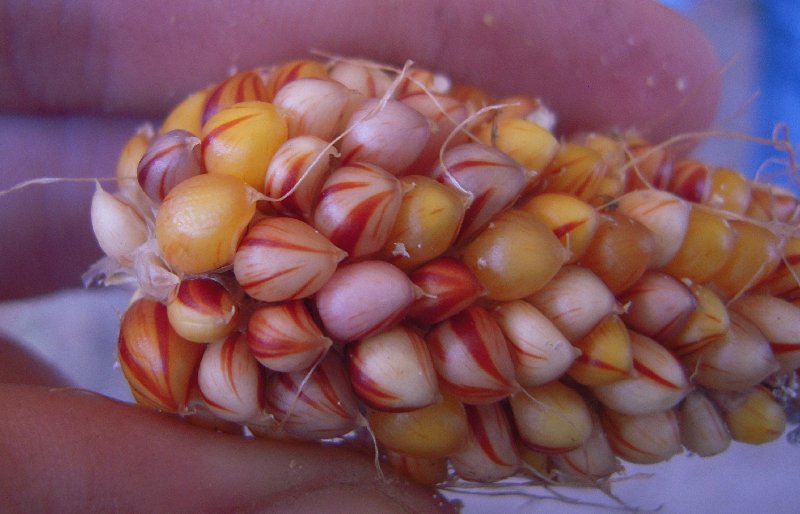
My favorite
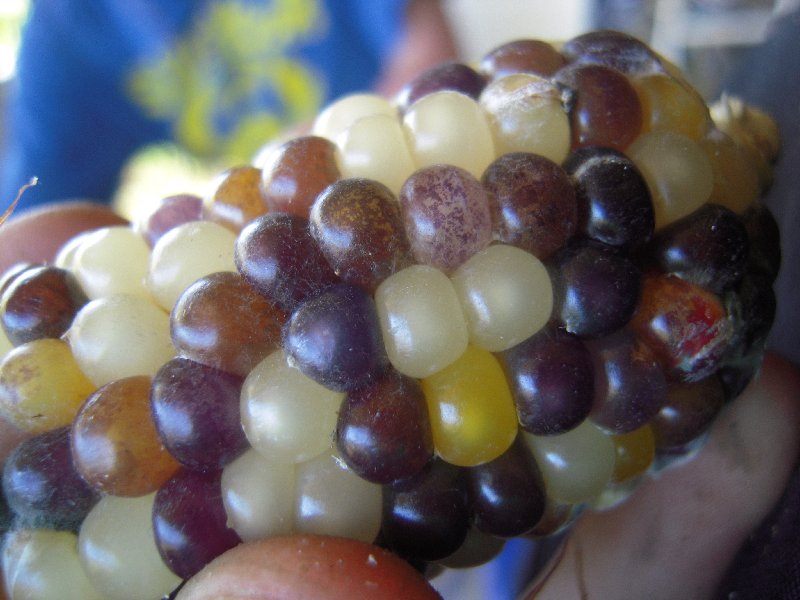
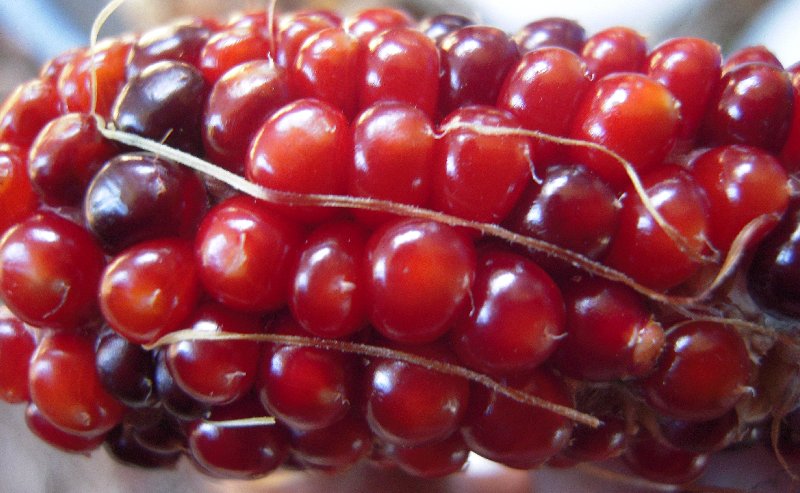
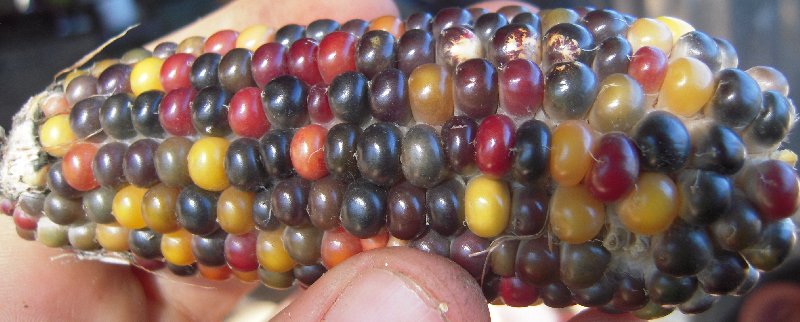
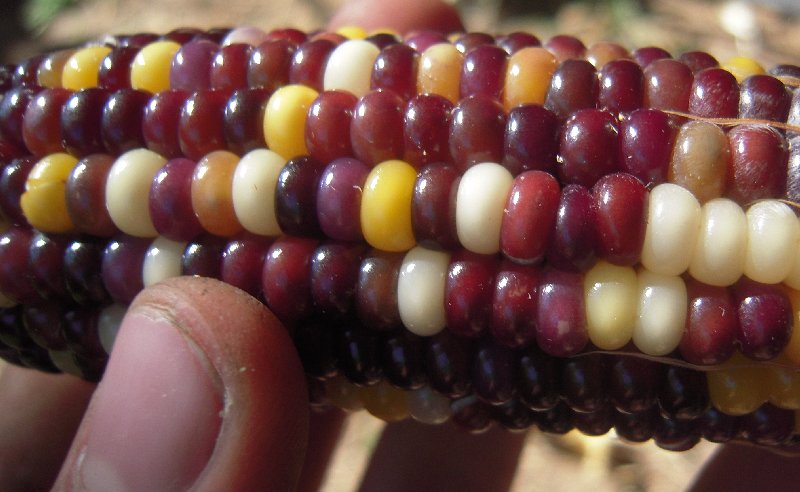
Pearls of delight!
The kernels are strangely shaped on the stripey one.
There are lots of genetic traits on display in this corn. There’s color, kernel shape, cob shape, and number of kernels. Also, some of the cobs have the kernels in straight rows where others are what is called shoepeg corn, with the kernels randomly arranged. You probably can observe other traits in this sampling, but I don’t know what they are.
The most striking trait is the color, of course. Each strand of silk is a pollen receptor that leads to a kernel. A vacant spot represents a strand that did not get fertilized. Corn is wind pollinated. The pollen drops from the tassels and may fertilize corn on any plant, including itself. I suppose that in the absence of wind, each plant is more likely to pollinate itself. I wonder about this process when I see all the different assortments of color.
This is popcorn. I got the seeds from an online friend this spring. I was thinking of getting some kind of flint corn to grow for animals as well as for kitchen use, but now that we’ve seen what this corn looks like at harvest time I’m thinking of using it as a general purpose corn. It’s very genetically diverse, which means that it will have a better chance of surviving whatever problems come along, such as drought or disease.
I never knew corn could be so beautiful. My favorite is the red.
Lovely, I like the 1st, 3rd and the last two….but they are all vey nice. Reminds me of what we used to call Indian Corn.